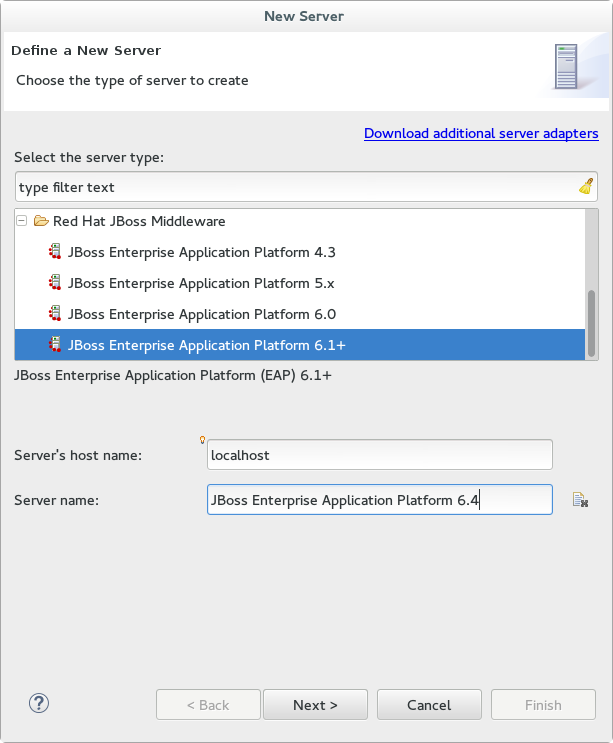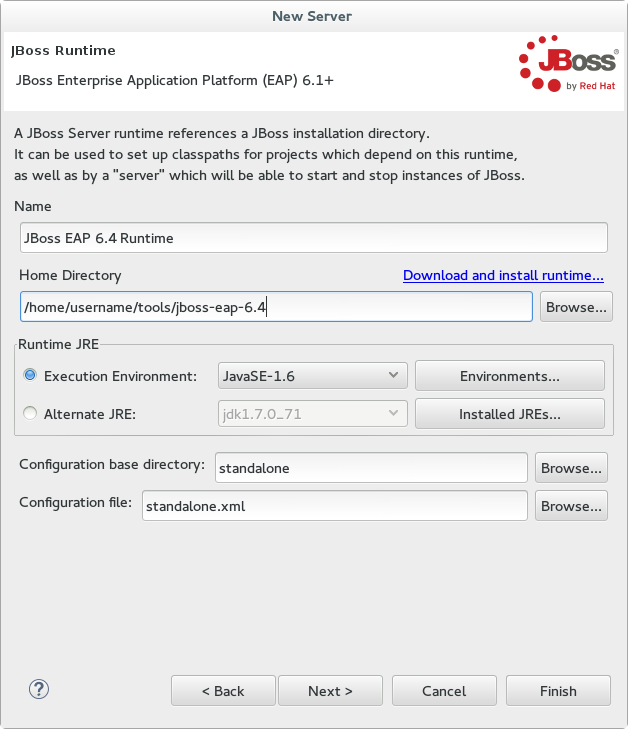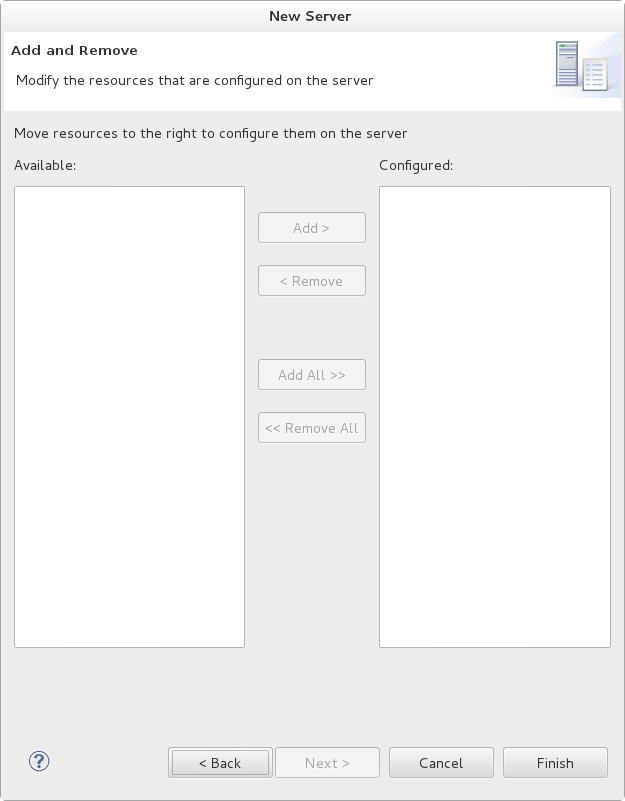Red Hat Training
A Red Hat training course is available for Red Hat JBoss Enterprise Application Platform
Chapter 4. Post-install Instructions
4.1. Set Up the Development Environment
4.1.1. Red Hat JBoss Developer Studio Installation Overview
This guide provides instructions for the simplest install path for Red Hat JBoss Developer Studio. For complete installation procedures, see the Install Red Hat JBoss Developer Studio guide at https://access.redhat.com/documentation/en-US/Red_Hat_JBoss_Developer_Studio/.
4.1.2. Download Red Hat JBoss Developer Studio
- Click the Download button. You are prompted to save the ZIP file to a directory of your choice.
4.1.3. Install Red Hat JBoss Developer Studio
- Open a terminal and navigate to the directory containing the downloaded
.jarfile. - Run the following command to launch the GUI installation program:
java -jar jboss-devstudio-build_version-installer-eap.jar
Note
Alternatively, you may be able to double-click the.jarfile to launch the installation program. - Click Next to start the installation process.
- Select I accept the terms of this license agreement and click Next.
- Adjust the installation path and click Next.
Note
If the installation path folder does not exist, a prompt will appear. Click Ok to create the folder. - Choose a JVM, or leave the default JVM selected, and click Next.
- Red Hat JBoss Developer Studio includes Red Hat JBoss Enterprise Application Platform. If it was previously installed, choose No. Otherwise, choose Yes to install and configure it for use with Red Hat JBoss Developer Studio.
- Review the installation details, and click Next.
- Click Next when the installation process is complete.
- Configure the desktop shortcuts for Red Hat JBoss Developer Studio, and click Next.
- Click Done.
4.1.4. Start Red Hat JBoss Developer Studio
To start Red Hat JBoss Developer Studio, you can double-click on the desktop shortcut created during the installation, or you can start it in a command line. This topic describes how to start Red Hat JBoss Developer Studio using the command line.
Procedure 4.1. Command to start Red Hat JBoss Developer Studio
- Open a terminal and navigate to the Red Hat JBoss Developer Studio installation directory.
- Run the following command to start Red Hat JBoss Developer Studio:For Linux:
[localhost]$ ./jbdevstudio
For Microsoft Windows:C:\JBDS_INSTALL_DIRECTORY > jbdevstudio.bat
4.1.5. Add the JBoss EAP Server Using Define New Server
These instructions assume this is your first introduction to Red Hat JBoss Developer Studio and you have not yet added any Red Hat JBoss Enterprise Application Platform servers. The procedure below adds the JBoss EAP server using the Define New Server wizard.
Procedure 4.2. Add the server
- Open the Servers tab. If there is no Servers tab, add it to the panel as follows:
- Click Window → Show View → Other....
- Select Servers from the Server folder and click OK.
- Click on No servers are available. Click this link to create a new server... or, if you prefer, right-click within the blank Server panel and select New → Server.

Figure 4.1. Add a new server - No servers available
- Expand JBoss Enterprise Middleware and choose JBoss Enterprise Application Platform 6.1+. Enter a server name, for example, "JBoss Enterprise Application Platform 6.4", then click Next to create the JBoss runtime and define the server. The next time you define a new server, this dialog displays a Server runtime environment selection with the new runtime definition.

Figure 4.2. Define a New Server
- Create a Server Adapter to manage starting and stopping the server. Keep the defaults and click Next.

Figure 4.3. Create a New Server Adapter
- Enter a name, for example "JBoss EAP 6.4 Runtime". Under Home Directory, click Browse and navigate to your JBoss EAP install location. Then click Next.

Figure 4.4. Add New Server Runtime Environment
Note
Some quickstarts require that you run the server with a different profile or additional arguments. To deploy a quickstart that requires thefullprofile, you must define a new server and add a Server Runtime Environment that specifiesstandalone-full.xmlfor the Configuration file. Be sure to give the new server a descriptive name. - Configure existing projects for the new server. Because you do not have any projects at this point, click Finish.

Figure 4.5. Modify resources for the new JBoss server
Result
The JBoss EAP Runtime Server is listed in the Servers tab.

Figure 4.6. Server appears in the server list

